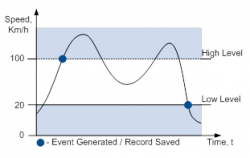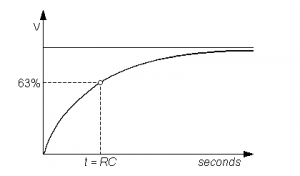Template:FMB I/O settings
When no I/O element is enabled, AVL packet comes with GNSS information only. After enabling I/O element(s) AVL packet along with GNSS information contains current value(s) of enabled I/O element.
Current value – if device is connected to configurator all current I/O values are displayed in this column.
Priority field – allows enabling I/O element and set them priority so it is added to the data packet and is sent to the server. By default 12 I/O elements with low priority are enabled: Ignition, Movement, Data Mode, GSM Signal, Sleep mode, GNSS Status, GNSS PDOP, GNSS HDOP, External Voltage, Speed, Battery Voltage and Battery Current. Priority (AVL packet priority) can be Low, High or Panic. All records made by FMB120 are regular. Regular packets are sent as Low priority records. When low priority event is triggered, FMB120 makes additional record with indication that the reason for that was I/O element change (depends from Operand configuration). When High priority is selected, module makes additional record with high priority flag and sends event packet immediately to the server by GPRS. Panic priority triggers same actions as high priority, but if GPRS fails, it sends AVL packet using SMS data sending mode if SMS data sending is enabled and data send number is written in SMS/Call Settings.
High and Low levels – define I/O value range. If I/O value enters or exits this range, FMB120 generates event. “Operand” parameter defines when to generate event: On Exit, On Entrance, On Both, On Hysteresis and On Delta Change.
Event only - when selected NO, I/O element status value will be appeared in each AVL record, and when selected YES, I/O element status value will be appended only to eventual records.
Operands
Operand On Exit
Record is generated when actual value input increases and becomes higher than high level or decreases and become lower than low level.
Operand On Entrance
Record is generated when actual value input increases or decreases and becomes between high and low level values.
Operand On Both
Record is generated by both (On Exit and On Entrance) operands logic at same time.
Operand Monitoring
No event at all. Values are recorded only when other trigger have worked.
Operand On Hysteresis
Record is generated when actual value input inceases from lower than low value to higher than high level value or decreasing from higher than high level to lower than low level.
Operand On Change
Record is generated when value changes.
Operand On Delta Change
Record is generated when value changes and absolute value of last value minus actual input value becomes equal or higher than high level value.
Avg Const
If avg const value is 10, new value must be present for 1 second to register change to new value. Internally sampling is done every 40ms, so 25 samples are taken in second. To configure 5 seconds averaging multiply 10 by 5 yielding 50. The same logic works even if device is in deep sleep mode.
Averaging follows RC exponential curves, see image below:
For Boolean values 5τ, values is used, that means value change is taken when new values is averaged to more then 99.3%.
OBD II (Bluetooth) and LVCAN I/O elements
In OBD II (Bluetooth) column are shown I/O elements which information can be obtained from OBD II Bluetooth dongle connected to FMB120 device and in LVCAN column are shown I/O elements whitch information can be obtained from LV-CAN200 or ALL-CAN300 connected to FMB120 device. All I/O configuration is the same as described in I/O settings section, except OBD II (Bluetooth) I/O element don’t have averaging constant parameter.
Detailed description about LVCAN I/O element configuration described in FMB120 with LV-CAN200 and ALL-CAN300 CAN adapters.







